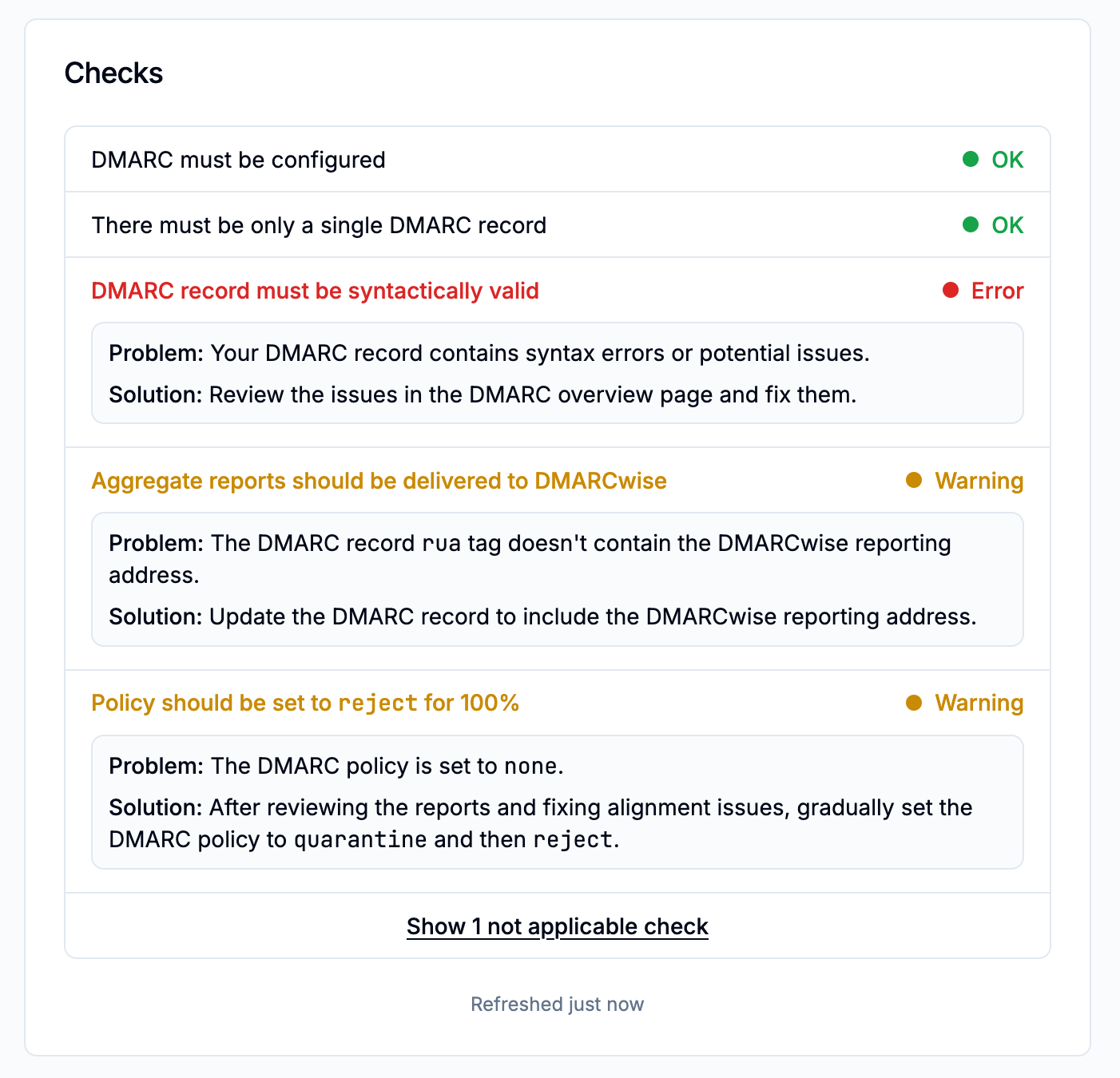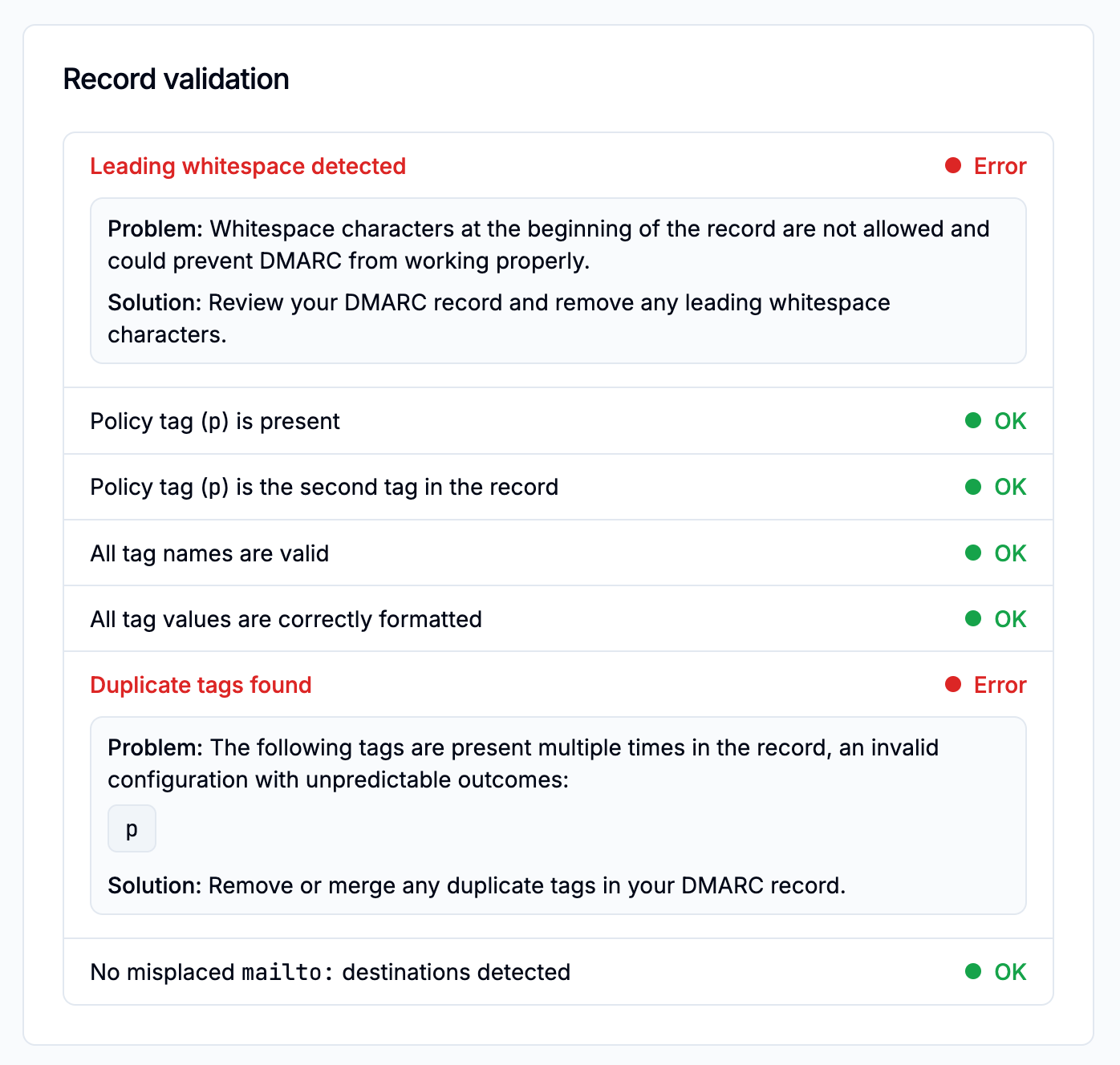Checks and Validation issues are two essential DMARCwise features that help you discover issues with your DMARC configuration and DNS record.
They evaluate the adherence of the configuration to standards and best practices, to ensure best compatibility and interoperability.
You can see checks results and the validation status in the dashboard, by choosing a domain and then selecting the DMARC overview tab.
Checks
Checks is a feature that helps you identify potential issues and misconfigurations with your domain. It focuses on industry best practices and tries to highlight improvements that could be applied to the domain’s configuration.
We scan your domain to identify the issues hourly, or whenever a change (like a new DMARC record) is detected. When you make changes to your domain’s configuration, allow some time for the checks to refresh.
Here’s and example of how checks results look like:

How it works
Each check tells you what the scanner expected according to standards and best practices, and the colored icon signals whether the expectation was met.
The status of each check can either be:
- Ok → no action needed.
- Warning → a potential issue was detected and attention is needed.
- Error → an invalid configuration was detected and it must be fixed as soon as possible. DMARC won’t work properly if you don’t fix this.
- Suggestion → it’s a best practice to enable or configure the specified feature.
- Not applicable → some checks aren’t always applicable, for example if there’s no DMARC record the policy check will be disabled.
List of DMARC checks
We currently perform the following DMARC checks:
- DMARC must be configured.
- There must be only a single DMARC record. Multiple records are an invalid configuration that prevents DMARC from working.
- DMARC record must be syntactically valid. See below for more details.
- Aggregate reports should be delivered to DMARCwise.
- DMARC compliance rate should be close to 100%.
- Policy should be set to
rejectfor 100%.
Record validation
We scan all DMARC records through our DMARC record parser, which is capable of analyzing the syntax to identify issues that could prevent DMARC from working properly with mail servers.
Here’s an example of how the validation issues list looks like:

We validate the record to make sure that:
- No leading whitespace is present.
- Policy tag (
p) is present. - Policy tag (
p) is the second tag in the record. - All tag names are valid.
- All tag values are correctly formatted.
- No duplicate tags are present.
- No misplaced
mailto:destinations are detected.
Note that we currently don’t detect the following issues:
- Missing
rufwhenfois present. ruaandrufURIs correctness.- A record not starting with
v=DMARC1(leading whitespace is ignored) will be discarded and not shown at all.
